Don’t Poke the Evil God With a Stick! Reviewing Carcosa
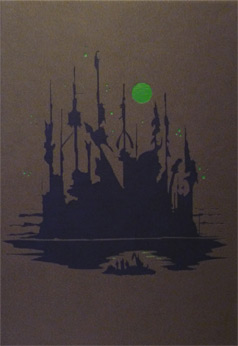
Carcosa by Geoffery McKinney is a weird game and it revels in it. Set on a blasted world “153 light years away from Earth, orbiting a star in the Hyades Cluster,” it is a brutal game of barbarians hopelessly battling (or insanely aiding) Cthuloid monstrosities with swords and clubs and left-over alien ray guns. Packaged as a setting for Lamentations of the Flame Princess, Carcosa takes some serious liberties with the system.
After a brief introduction citing some inspirational material (Lovecraft, Howard, Moorcock), the book jumps in with its biggest bit of weirdness: the dice mechanics. In Carcosa, no creature has set hit points, only hit dice (one per level for PCs). At the beginning of every battle the type of these hit dice at determined randomly and than rolled. For example, if a 3rd level fighter were battling a 5 hit dice beastie, the fighter would roll some dice, consult a chart and see that his hit dice are 8-siders and his hit points are 17 (4,5,8). Meanwhile the beastie’s 5 hit dice turn out to be d4’s and its hit points 9 (2,1,4,1,1). Battle can now commence. Every weapon in Carcosa does 1 die of damage. Again the type of die is determined randomly.
This randomness, the book states, is intended to make combat dangerous and unpredictable, giving the players hope against even the nastiest horror and making them think twice about attacking even the lowest peasant. In this, Carcosa succeeds too well. In play, my players and I found combat to be so chaotic as to be almost meaningless. The players certainly thought twice about getting into any fight but the game presents few alternatives to combat. For my part, I had a very hard time planning a game when I could not tell if a particular combat would be a minor hindrance, a heroic challenge, or a TPK.
I did like the healing system presented, however, and I’m considering adopting it for my own dungeon-crawls. In short, survivors of a combat only lose whole hit dice, regaining any partially lost hit dice immediately after the fight. I like to think of hit points as a representation not just of blood loss and organ damage, but also fatigue and bruising, and it makes sense to me that some of the latter would heal naturally after a fight.
Aside from dice mechanics, Carcosa makes one other major break from LotFP: there are only two classes. Players can choose to be either fighters or sorcerers. The only stated difference is the sorcerers’ ability to cast spells (as the book was unclear, I kept the special combat maneuvers as fighter-only). With no clerics there is no magical healing (except for hard-to-find alien technology). The book’s introduction states that specialists (Lamentations’ “thief” class) can be added or not without effecting the feel of the game. I would strongly suggest using them, otherwise everyone in the game will be lousy at searching, sneaking, and climbing.
The world is very bleak. The 13 races of Men live in vicious little village-states (which makes the game’s gold piece economy seem out-of-place), grubbing after alien technology, worshipping mad gods, hating each other, and generally being miserable. There are some features that some players may find unpalatable: not just torture and rape, but odd little details like “reproductive capability [of humans] is typical reached at ages 10-12”. PCs are, of course, “a rare breed, and with them lie any hope for a long-term-change to mankind’s unenviable predicament.”
The planet of Carcosa is infested with disgusting god-monsters borrowed (loosely) from the Cthulhu Mythos and every spell (“ritual”) in the game deals with these horrors. There are spells to summon, bind, control, banish, and (bizarrely) torment the “Old Ones” and their minions. Every one of these spells is very involved and specific, affecting only a particular god or type of monster, often at a particular time and/or place. And every one of them, save for the banishing spells, require enough murder, torture, or rape to make a Call of Cthulhu grimoire look like the Book of Common Prayer. Carcosa’s sorcerers are more cultists than wizards. Even my most reckless player never even considered casting his one spell. A sorcerer could, of course, only learn banishing spells and dedicate himself to battling his insane brethren, and maybe that is the game’s (unstated) intent, but this would be a very difficult, and I think very limited, character concept.
The other aspect of character creation (besides the choice of 13 nearly identical chromatic races of men) is psionics. Every character with a sufficiently high intelligence, wisdom, or charisma score has a small chance of possessing psionic powers. A check is made every day and if psionics are indicated they are randomly chosen from a list of eight, ranging from clairvoyance to mind control to telekinesis to “mind blast”. This particular bit of randomness completely ruined the climax of the adventure I ran. After trekking through a murky dungeon, the PCs had found the lair of the vile Bone Sorcerer, in fact they had come to his very door. One of the PCs randomly had both clairvoyance and mind blast that day. After peering through the door with the former, he exploded the Bone Sorcerer’s head with the latter! They never even opened the door.
As in his other book, Isle of the Unknown, Geoffrey McKinney use a hex-map approach to describing the game world. The front and back flaps contain hex-maps of portions of Carcosa while inside the book are 100 pages detailing one or two features of each hex. This makes for interesting reading but it is difficult to form a picture of what is actually going on. There are lots of strange idols, cackling hermits, bloodthirsty tribes, and inscrutable aliens, but there is little motivation or relationships, or role-playing information.
This is a book of wonderful details. There are charts full of alien technology, random mutations, and crazy drugs. There are over 30 pages of vile spells, each fully detailed. There are dozen of pages detailing scores of monstrosities, gods, and spawn. There are 800 listed encounters on the hex-map. There is, in fact, too much detail. The book is certainly honest; the introduction tells us not to expect “long-winded histories or encyclopedic descriptions of countries, forests, and rivers.” What we are given instead is a plethora of details that, taken separately, are fascinating, but taken together seems strangely redundant. The vast majority of the rituals, for instances are really, really evil and as such mainly suited villainous NPCs, so do we really need in depth descriptions of over 50 NPC-only spells? Do we really need to know how many White or Yellow youths must be murdered to summon the Diseased Guardian? (The other option – that the hideous rituals are intended for PC use – frankly, makes my skin crawl. But to each their own; “live and let die”, as the song says.) The monsters, too, start to look a bit samey after a bit. Every other one seems to be some kind of amorphous, tentacles blob whose only goal is to kill everyone. I would have preferred fewer blasphemous spells and more information on the 13 races of Men, maybe a sample town with fully detailed NPCs, or some hints as to what the aliens are doing. These and other areas are left intentional vague “to preserve the greatest latitude for each Referee to make Carosa his own”. I can appreciate the sentiment, but Carcosa is too vague. A few suggestions and examples of “anthropological description” would have been very helpful. Even the Sample Adventure, which I consider a game’s chance to fill in the gaps and really showcase what it can do, was merely a collection of hex-descriptions with the thinnest connecting threads and minimal role-playing information.
The introduction suggests several ways to use Carcosa: as inspiration, as plunder for other games, as a good read, as a one-night stand, or as a complete setting. As the first three, the game is a success, creating a heady atmosphere of Old School pulp SF horror with lots of neat details. As a once-off game, it requires a lot from a GM – either considerable prep-work or some fancy ad libbing. As a setting, Carcosa is anything but complete. It isn’t even a toolkit. It’s the partial skeleton of some ancient abomination whose claws and bones and teeth testify to the cruelest obscenities while giving only the vaguest hints as to how the thing moved or what it ate.

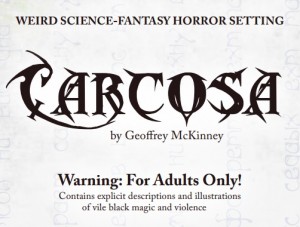
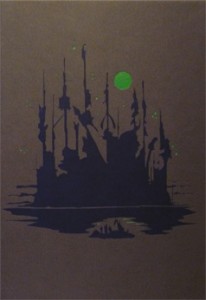
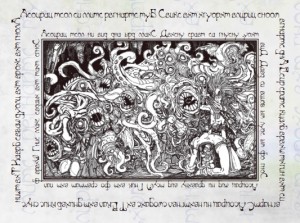
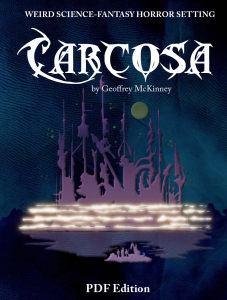



Great review. My sentiments were identical. It’s a pretty book and fun to read but the mechanical stuff is too random.